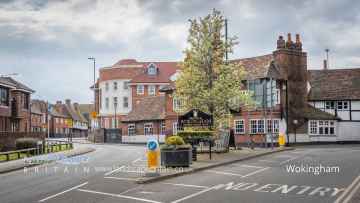Windsor
Windsor is a Town in the county of Berkshire.
Windsor postcode: 01270
There are great places to visit near Windsor including some great towns, country parks, lakes and shopping centres.
Towns to visit near Windsor include Wokingham, and Reading.
Don't miss Dinton Pastures's country parks if visiting the area around Windsor.
The area close to Windsor boasts some of the best lakes including Dinton Pastures.
Don't miss The Oracle's shopping centres if visiting the area around Windsor.
Windsor History
There are some historic monuments around Windsor:
Places to see near Windsor
History of Windsor
The settlement at Old Windsor largely transferred to New Windsor during the 12th century, although substantial planning and setting out of the new town (including the parish church, marketplace, bridge, hermitage and leper hospital) did not take place until c. 1170, under Henry II, following the civil war of Stephen’s reign. At about the same time, the present upper ward of the castle was rebuilt in stone. Windsor Bridge is the earliest bridge on the Thames between Staines and Reading, built at a time when bridge building was rare; it was first documented in 1191, but had probably been built, according to the Pipe rolls, in 1173. It played an important part in the national road system, linking London with Reading and Winchester, but also, by diverting traffic into the new town, it underpinned the success of its fledgling economy. The town of New Windsor, as an ancient demesne of the Crown, was a privileged settlement from the start, apparently having the rights of a ‘free borough’, for which other towns had to pay substantial fees to the king. It had a merchant guild (known by the 14th century as the Fraternity or brotherhood of the Holy Trinity) from the early 13th century and, under royal patronage, was made the chief town of the county in 1277, as part of its grant of royal borough status by Edward I’s charter. Somewhat unusually, this charter gave no new rights or privileges to Windsor but probably codified the rights which it had enjoyed for many years. Windsor’s position as chief town of Berkshire was short-lived, however, as people found it difficult to reach. Wallingford took over this position in the early 14th century. As a self-governing town Windsor enjoyed a number of freedoms unavailable to other towns, including the right to hold its own borough court, the right of membership (or ‘freedom’) and some financial independence. The town accounts of the 16th century survive in part, although most of the once substantial borough archive dating back to the 12th century was destroyed, probably in the late 17th century. New Windsor was a nationally significant town in the Middle Ages, certainly one of the fifty wealthiest towns in the country by 1332. Its prosperity came from its close association with the royal household. The repeated investment in the castle brought London merchants (goldsmiths, vintners, spicers and mercers) to the town in the late 13th century and provided much employment for townsmen. The development of the castle under Edward III, between 1350-68, was the largest secular building project in England of the Middle Ages, and many Windsor people worked on this project, again bringing great wealth to the town. Although the Black Death in 1348 had reduced some towns’ populations by up to 50%, in Windsor the building projects of Edward III brought money to the town, and possibly its population doubled: this was a ‘boom’ time for the local economy. People came to the town from every part of the country, and from continental Europe. The poet Geoffrey Chaucer held the honorific post of ‘Clerk of the Works’ at Windsor Castle in 1391.








